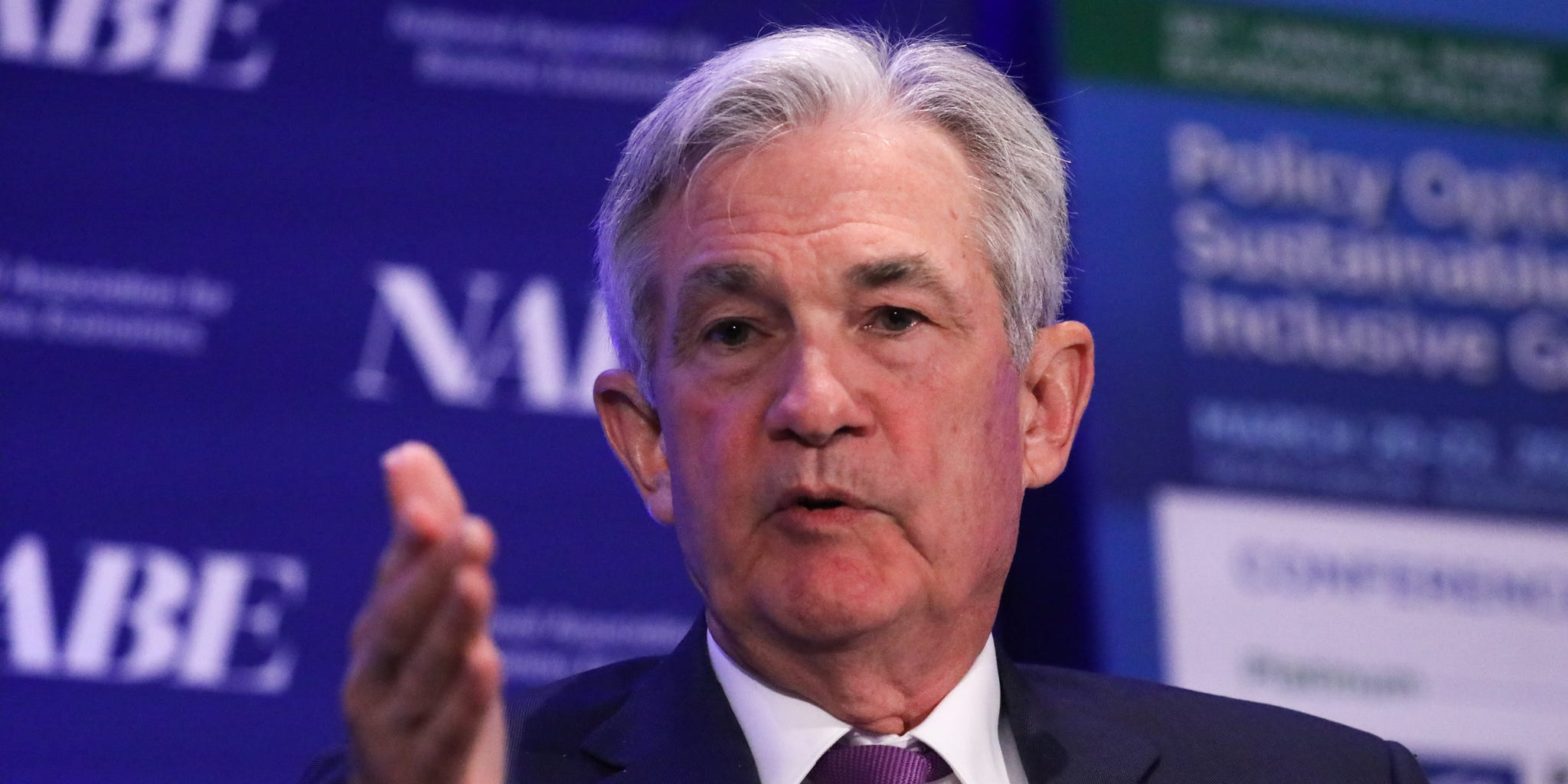Investors on Friday were pricing in a more dovish outlook for the Fed’s September rate hike. The CME FedWatch tool showed a 45.5% probability of a 50-basis-point hike after Powell’s Jackson Hole speech, up from 36% a day earlier. At the same time, the probability of a rate increase of 75 basis points slipped to 54.5% from 64% a day prior. Loading Something is loading.
Investors on Friday were pricing in expectations the Federal Reserve will refrain from issuing another super-sized interest rate increase at its September meeting, after Chair Jerome Powell warned of “some pain” to Americans as the central bank fights hot inflation.
The CME FedWatch tool showed a 45.5% probability of a rate increase of 50 basis points next month, higher than the 36% probability on Thursday.
At the same time, the probability of a rate increase of 75 basis points was at 54.5%, down from 64% a day prior.
The Federal Open Market Committee will meet on September 20-21 and is expected to deliver the fifth rate increase of 2022. The Fed raised the fed funds rate by a hefty 75 basis points at its meetings in June and July. The June hike was the first one sized at three-quarters of a percentage point since 1994.
The S&P 500 and the Nasdaq Composite each fell about 2% Friday after Powell stressed the central bank’s resolve in dragging down inflation that’s sitting around a four-decade high. The Fed has been ratcheting up interest rates to slow activity in the world’s largest economy and cool inflation.
Price stability is imperative to maintaining a strong labor market and the next phase of policy tightening will “bring some pain to households and businesses,” Powell said in a speech at the Fed’s symposium in Jackson Hole, Wyoming. The rate hikes are producing higher mortgage rates and more expensive credit-card debt, among other results.
He added that “at some point,” the pace of rate hikes will slow as monetary policy tightens further.
“In essence, Powell is clearly stating that right now, fighting inflation is more important than supporting growth,” Jeffrey Roach, chief economist at LPL Financial, said in a note.
Roach said supply constraints will be key to the timing for slowing the pace of rate increases. “Supply chains are consistently improving and should continue to bring inflation rates down. Our view is that the FOMC will likely hike rates by 50 basis points in September and slow the pace to 25 basis point increments in later meetings.”
The Fed is working to bring down inflation to its 2% target. The central bank’s preferred inflation gauge, the core Personal Consumption Expenditures Price Index, or PCE, on Friday came in at a 4.6% rate in July year over year, and was up 0.1% month over month. The reading was softer than Econoday’s consensus estimates at 4.7% and 0.3%, respectively.
July core CPI was 5.9% and the headline inflation rate that includes energy and food prices was 8.5%, easing from 9.1% in June.
Expectations for Fed rate hikes. CME Deal icon An icon in the shape of a lightning bolt. Keep reading
More: MI Exclusive Stocks Federal Reserve Interest Rates Chevron icon It indicates an expandable section or menu, or sometimes previous / next navigation options.
